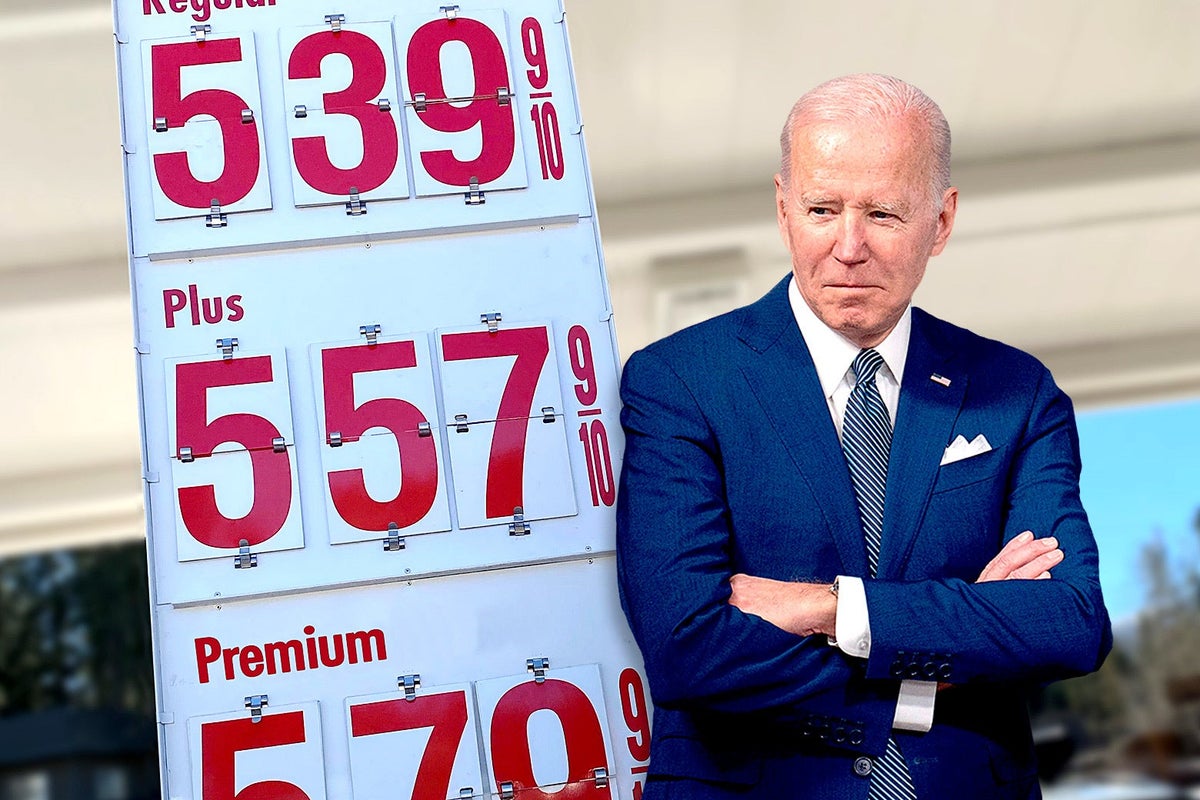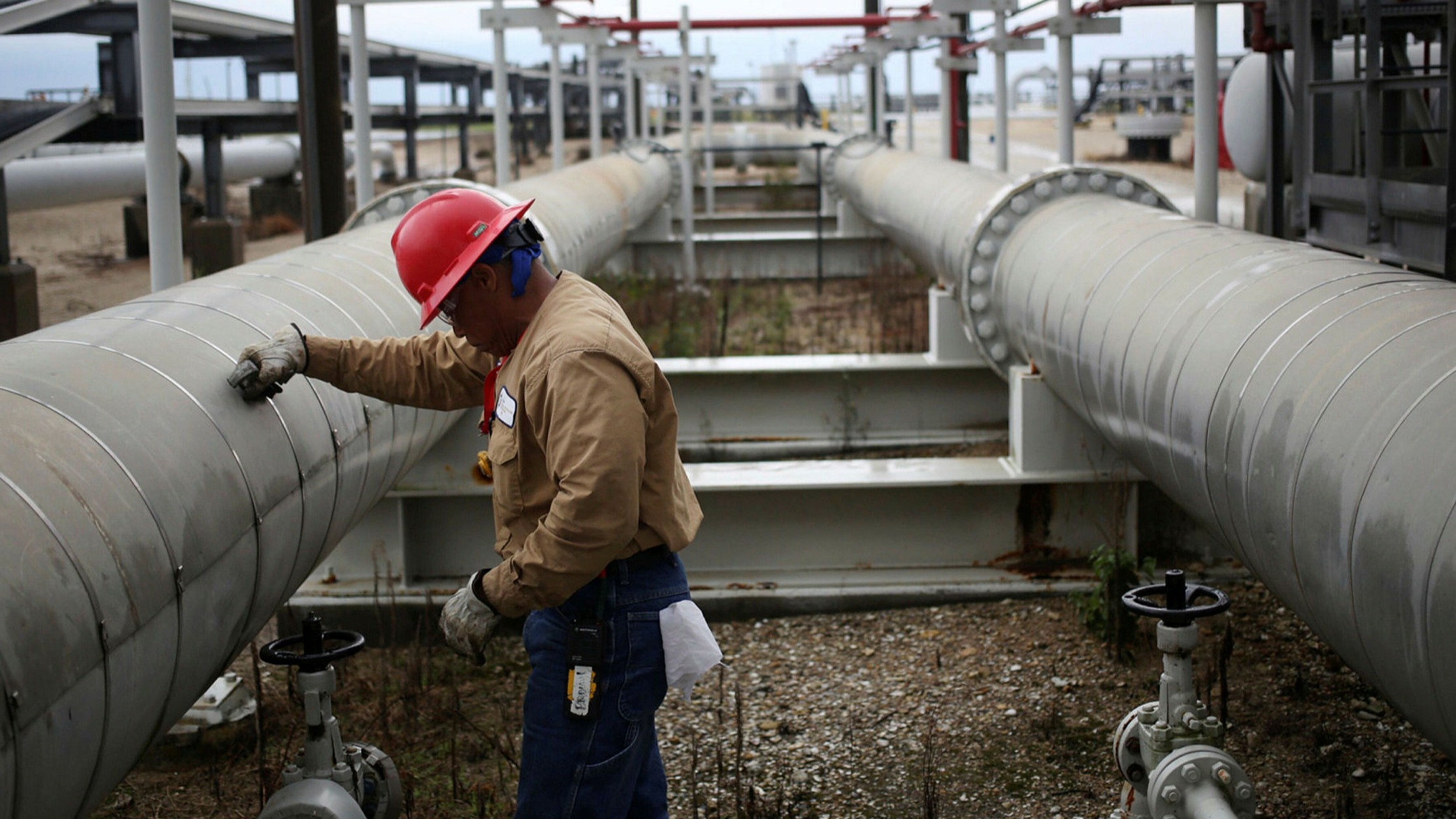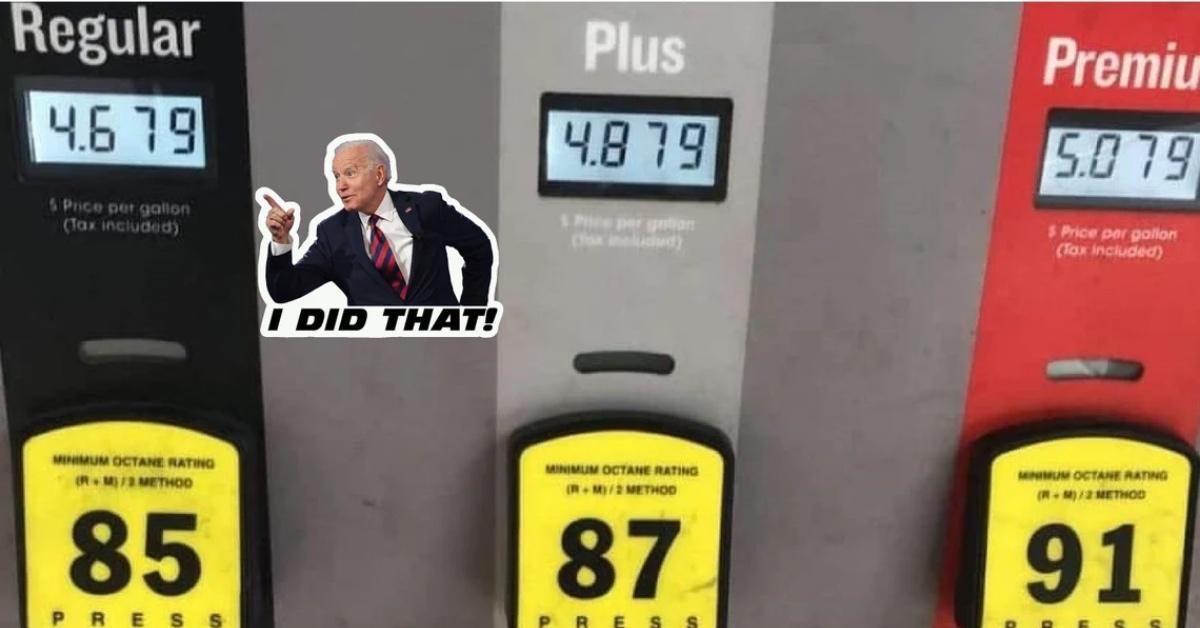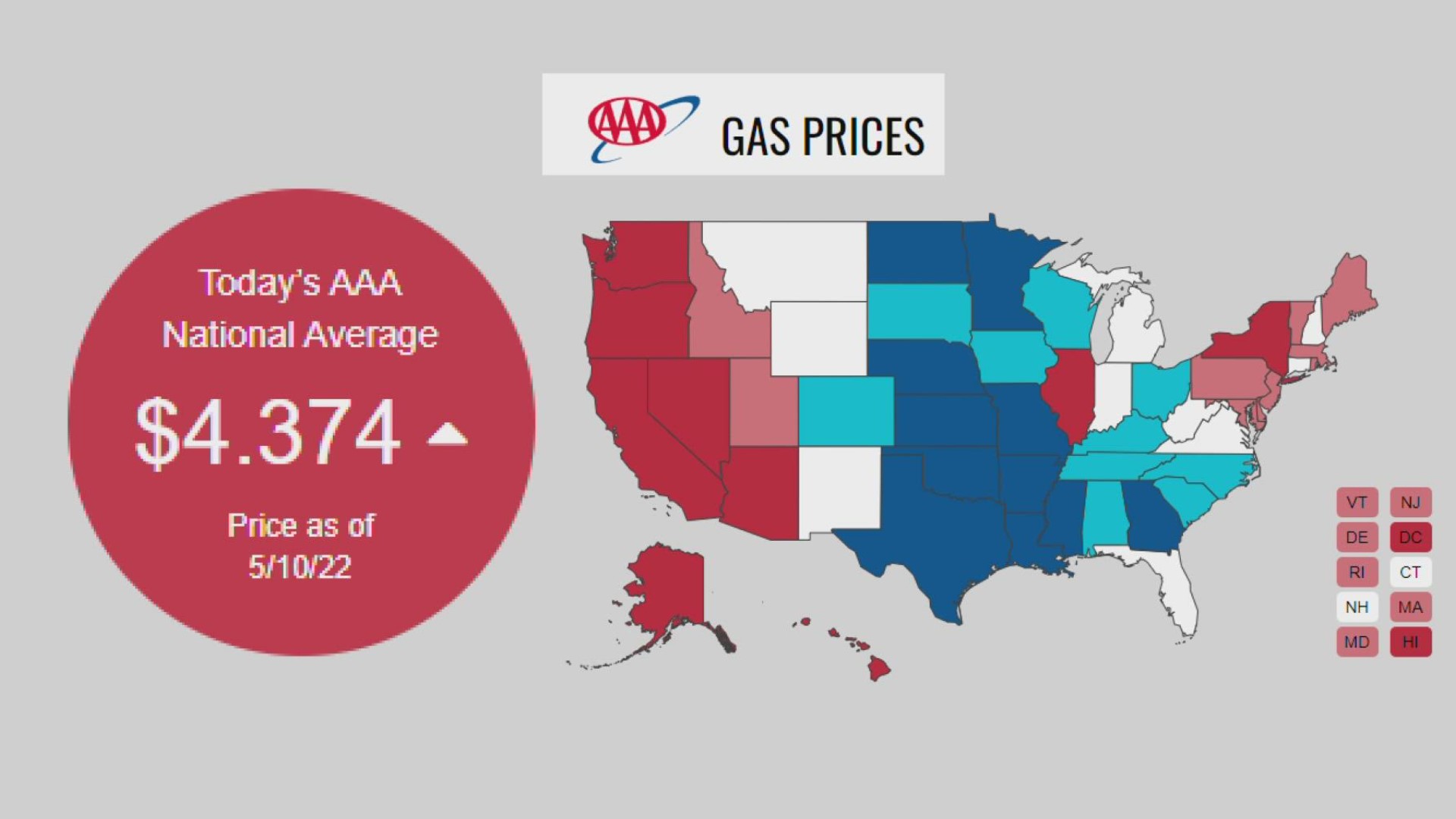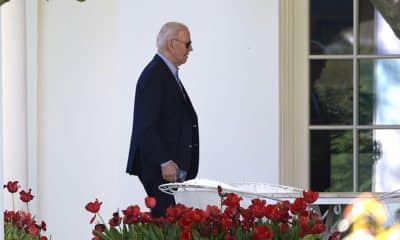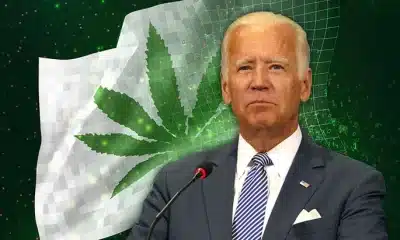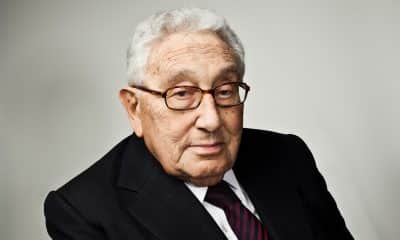Election News
Biden Sell’s Off Emergency Oil Reserves Ahead of Nov 8 Elections
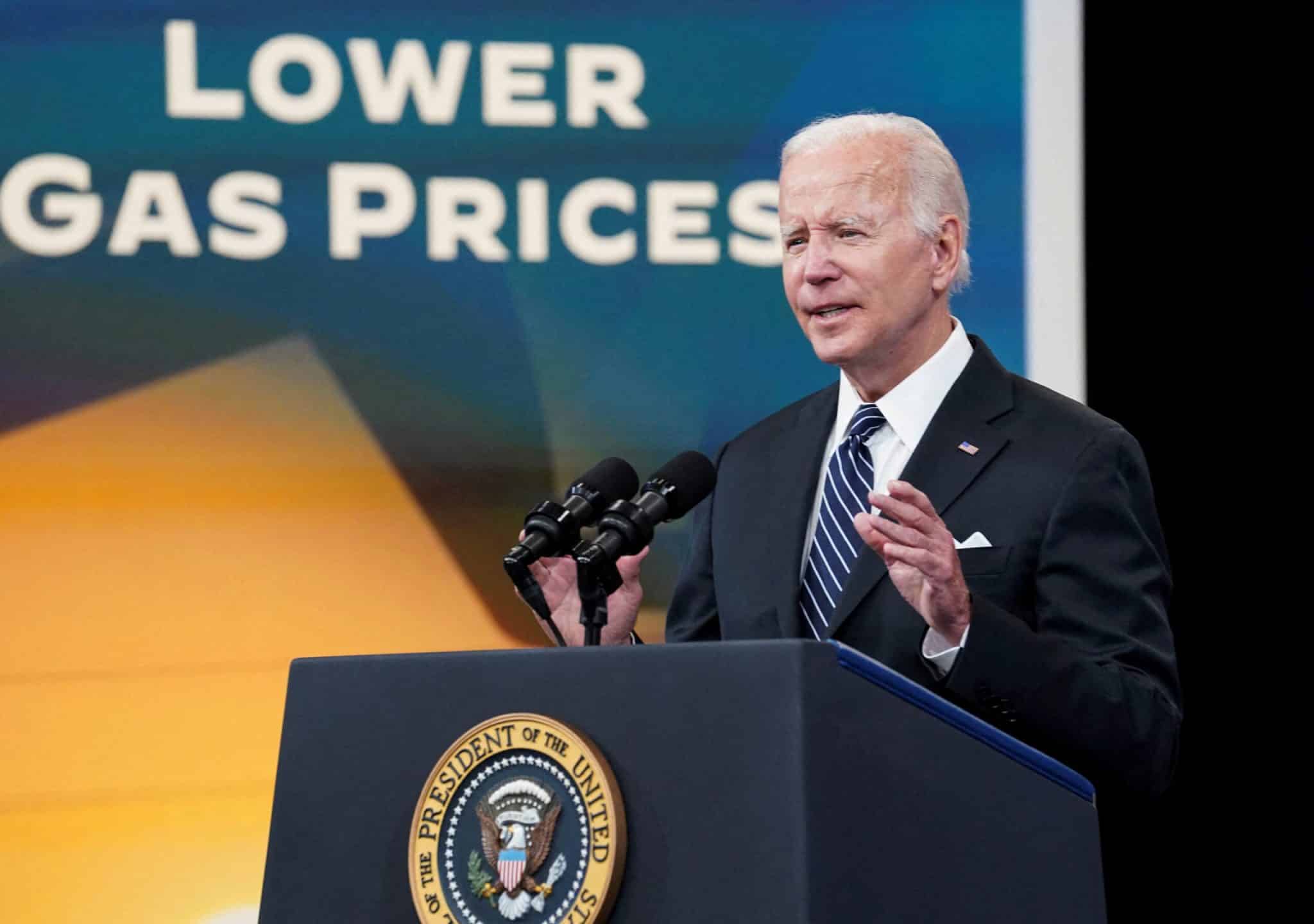
On Wednesday, U.S. President Joe Biden announced a plan to sell off the remainder of his pre-release from the U.S. emergency oil reserve by the end of 2022 and begin replenishing the stockpile to reduce high gasoline prices ahead of the Nov. 8 midterm elections.
Biden’s goal is to increase supply sufficiently to prevent near-term oil price rises that would penalize Americans and reassure U.S. drillers that the U.S. government would enter the oil market as a buyer if prices fall too low.
He said 15 million barrels of oil would be offered from the emergency Oil Reserve as part of a record 180 million barrel release that began in May and that the U.S. is ready to tap supplies again early next year to keep prices under control.
“It’s what we’re calling a prepare and release plan,” Joe Biden said at a White House event. “This enables us to respond rapidly to world events and avert oil price rises.”
Joe Biden’s use of the federal government’s Oil reserves to manage oil price surges and attempts to enhance U.S. output demonstrate how the Ukraine crisis and inflation have altered the policies of a president who campaigned to reduce the country’s reliance on the fossil fuel industry.
The White House felt an increased sense of urgency after the Saudi-led Organization of Petroleum Exporting Countries irritated Biden, sided with Russia and agreed to a production cut, prompting Biden to remark that the US-Saudi relationship has to be revalued.
“With today’s statement, we’re going to continue to stabilize markets and lower prices at a time when other countries’ actions have produced such instability,” Biden said.
Biden blamed rising crude and gasoline costs on Russian President Vladimir Putin’s invasion of Ukraine, adding that prices had plummeted 30% from their peak earlier this year.
He also reminded U.S. energy corporations, gasoline merchants, and refiners to stop using record profits to buy back stock and instead invest in production.
Prices aren’t lowering fast enough, he claims.
“Families are hurting,” he says, and rising gasoline prices strain their finances.
Faced with criticism from Republicans who claim he is using the SPR for political reasons rather than an emergency, the president also stated that the nation’s stockpiles would be replenished in the coming years.
He stated that his goal is to replenish supplies when U.S. crude is about $70 per barrel, a price he believes will allow firms to profit while still being a good value for taxpayers. On Wednesday, the U.S. benchmark was around $85 per barrel.
According to Biden, the SPR, already at its lowest point since 1984, is more than half empty with more than 400 million barrels of oil.
The administration intended to stop selling the 180 million barrels in November. Purchases by businesses such as Marathon Petroleum Corp (MPC.N), Exxon Mobil Corp (XOM.N), and Valero Energy Corp (VLO.N) were, however, slower than expected over the summer, with approximately 15 million barrels remaining unsold.
Presidents in the United States have limited influence over fuel prices, but given the country’s vast gasoline consumption – the largest in the world – high costs at the pump can be political poison. Retail gasoline prices have decreased from a high in June, but they remain higher than historical averages and significantly contribute to inflation.
The disparity between wholesale and retail prices has also risen, prompting the White House to issue cautions against price gouging.
With the new SPR repurchase guarantee, Biden believes oil companies will be more confident in investing in production and stop pushing stock buybacks.
“So, to all businesses, I say, “You’re sitting on record profits, and we’re offering you more confidence.” So you may take action right now to improve oil production, “He stated.
Companies “You should not use your profits to repurchase stock or pay dividends. Not now, not while there is a war raging, “He asked them to lower the prices they charge at the pump.
In recent weeks, the oil sector has grown increasingly apprehensive that the administration may take the dramatic step of prohibiting or limiting gasoline or diesel exports to replenish dwindling U.S. supplies.
They have urged the government to withdraw the option, which officials are unwilling to do.
Biden is to Blame for High Gas Prices
When President Biden began office, a gallon of normal gas cost an average of $2.38. It now costs $3.92.
Mr. Biden has attempted to blame Russian President Vladimir Putin and his invasion of Ukraine for the rising cost, referring to it as “Putin’s price hike, and now he’s blaming Saudi Arabia.
” However, gasoline had already reached $3.53 per gallon when the red megalomaniac invaded. As a result, Mr. Putin was not to blame.
The president has taken numerous attempts to reduce the price but to no avail. He released millions of barrels from the Strategic Petroleum Reserve (SPR), but practically every analyst believes this is only a temporary solution.
By the end of March, a gallon of gas cost $4.23, so he drew on the vast emergency reserve, allowing the discharge of 125 million barrels of oil. However, the United States consumes approximately 20 million barrels of oil daily, so Mr. Biden’s release was brief.
Prices levelled off for roughly five weeks, hovering just above $4. Then it all started over: $4.62 at the end of May and even $5.00 by mid-June.
However, economists argue that the SPR release is not the cause of declining prices. Prices had risen so far that many had just stopped buying.
Prices began to rise again after 99 days of decline. Reporters questioned White House press secretary Karine Jean-Pierre about it all last Tuesday.
“You stated that the president was to blame for the drop in gas prices. “Is the president to blame for rising petrol prices?” a reporter inquired.
“It’s far more sophisticated than that,” Ms. Jean-Pierre explained. “You are aware of this. There have been global challenges to which we have all responded. When I say ‘all,’ I mean that other countries have had to deal with it since the pandemic.
There was the pandemic, and then there was Putin’s war. In addition, Putin’s war has raised petrol costs at the pump. “We’ve seen that over the last few months,” she remarked.
As prices began to climb again, Mr. Biden began to blame oil firms, despite taking credit for reducing costs.
According to the letter acquired by The Wall Street Journal from Energy Secretary Jennifer Granholm to seven major refiners, the Biden administration has gone so far as to advise them to limit fuel exports.
“Given the historic level of U.S. refined product exports,” Ms. Granholm said in an August letter to seven U.S. refiners, “I again advise you to focus in the near term on growing inventories in the United States rather than selling down present stockpiles and boosting exports.”
However, the refiners retaliated. “Banning or restricting the export of refined products would certainly lower inventory levels, reduce domestic refining capacity, raise consumer fuel costs, and alienate U.S. friends during a time of conflict,” business leaders said in response to Ms. Granholm.
Mr. Biden also halted much of the oil production growth in the United States.
“Recall that the United States imported 10.1 million barrels per day (BPD) of crude oil in 2005, with OPEC accounting for 4.8 million BPD (48%) of that total. The SPR held 685 million barrels. With the United States buying 10.1 million BPD of crude oil at the time, there was enough oil to last 68 days,” Forbes noted.
Mr. Biden even went to Saudi Arabia to ask for more oil (remember the fist bump with Crown Prince Mohammed bin Salman?). He almost went empty-handed, save for a vague agreement in which Saudi Arabia stated that it would “help global oil market balancing for continued economic growth” but never specified how much petroleum would be delivered.
Mr. Biden stated that he was not there for oil but that he and the prince “privately agreed that oil-producing states would agree to increase output at an Aug. 3 summit,” according to The New York Times.
While the Organization of Petroleum Exporting Countries (OPEC) declared an increase in output in August — 100,000 barrels per day — it didn’t last long. OPEC stated this month that it would cut oil production by two million barrels a day due to a glut in the global crude oil market.
In the end, Mr. Biden deserves none of the credit — and all of the blame — for rising gas costs.
Source: VOR News, Reuters
Election News
Biden Administration Plans for Potential Presidential Transition
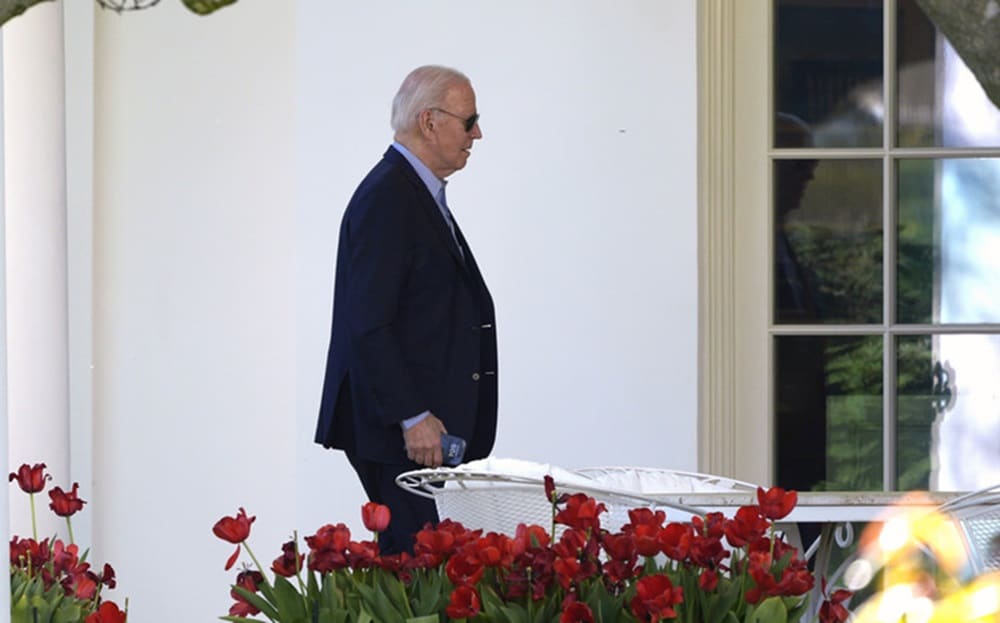
On Friday, President Joe Biden’s administration formally began preparations for a prospective presidential transition, with the goal of ensuring government continuity regardless of the outcome of November’s general election.
Shalanda Young, director of the Office of Management and Budget, wrote memorandum to all executive departments and agencies instructing them to designate a focal person for transition preparation by May 3. It’s the standard initial step in congressionally mandated presidential transition planning.
Next week, White House Chief of Staff Jeff Zients, who also chaired Biden’s 2020 transition effort, will lead the first meeting of the White House Transition Coordinating Council, which is made up of senior White House policy, national security, and management officials as required by the Presidential Transition Act.
The act gives government assistance to major party candidates in preparing to govern so that they can have personnel in place to implement policy initiatives on their first day in office.
Biden’s plan for a handover
Making sure presidential candidates are prepared to take over the federal government became a higher priority following the 9/11 attacks, and the act has been updated several times since then to provide additional resources to candidates and to require incumbents to plan for a handover with even greater intensity.
Young’s letter is remarkably identical to one delivered by Trump administration acting director Russell Vought four years ago, for a transition process that began well but became disrupted when then-President Donald Trump refused to admit defeat to Biden.
It took until November 23, two weeks after the election, for Trump’s General Services Administration to declare Biden the “apparent winner” of the 2020 contest, a necessary step before the transition could begin.
Inauguration Day
The legislation compels presidential contenders and the General Services Administration to strike an agreement on everything from federal office space to access to sensitive information by September 1, but it is frequently accomplished sooner. Before signing the memorandum of understanding, candidates must formally obtain their party’s nomination at their respective conventions.
Transition teams begin assessing applicants for positions in a future administration, including starting the time-consuming security clearance process for potential appointees who must be ready to assume office on Inauguration Day.
Biden launched a separate task force in February to address the “systemic” problem of mishandling classified information during presidential transitions, just days after a Justice Department special counsel’s sharply critical report revealed that he and his aides had done so when he left the vice presidency in 2016.
Source: Yahoo News
Election News
Election Week in India Sparks Violence and Hate Speech
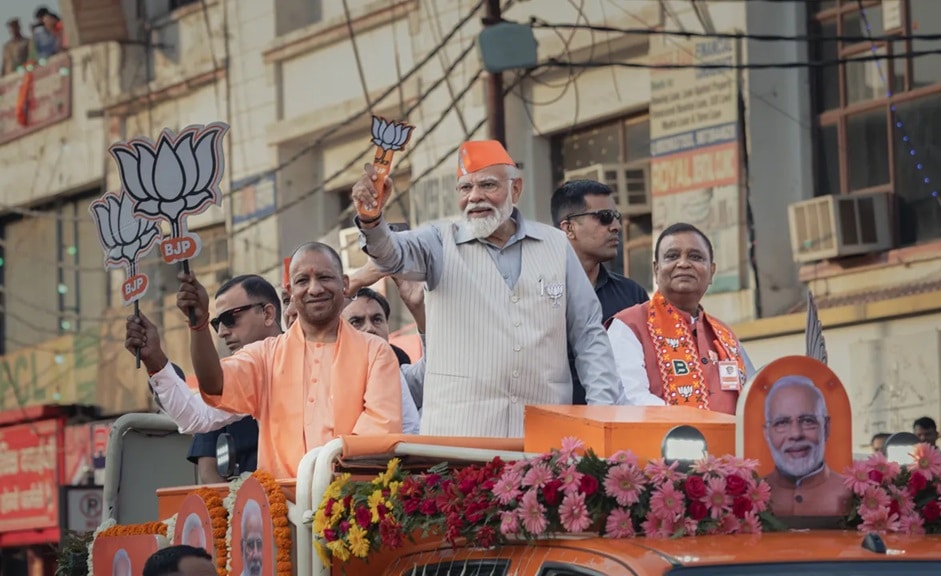
It is not Election Day in India; rather, it is Election Week. Plural. CNBC reported that voters in “the world’s largest democratic election” began voting last Friday, marking the first of seven phases of voting that will take place over six weeks.
There are unlikely to be many shocks at the end of that marathon: Prime Minister Narendra Modi and his Hindu-nationalist Bharatiya Janata Party (BJP) are predicted to win “another landslide victory,” giving Modi a third five-year term in office.
That does not imply that the campaign has been uneventful. The New York Times reported that “armed men attacked polling stations and captured voting booths” in the state of Manipur, forcing authorities to rerun early voting.
Modi faced accusations of “hate speech” late in the campaign, CNN said, after telling a Hindu audience that Muslim opponents provide “your hard-earned money” to “infiltrators.”
Following the election, there were numerous AI-generated deepfake videos featuring Bollywood actors condemning Modi.
Speaking at a general election rally, India’s prime leader labeled Muslims as ‘infiltrators’ who ‘have the most children.’ He did not name them.
The mask did not take long to fall off. Two days after polling opened for the legislative elections, which will culminate on June 1, Narendra Modi, who is driving the campaign for his party, went on an openly Islamophobic rant.
Muslims in India
On Sunday, April 21, at a rally in Rajasthan’s tribal district of Bhanswara, the Indian prime minister insulted and vilified Muslims without mentioning them.
He accused the Congress, the main opposition party, of attempting to transfer national riches “to those who have the most children, the infiltrators,” adding that his predecessor, Manmohan Singh, had declared that Muslims had “the first right to the nation’s resources.”
“That means they will collect all of your wealth and distribute it to who? – To those with the most children. They will spread it among the infiltrators.
Do you think your hard-earned money should go to the infiltrators? Do you approve of that?” He challenged the audience to applaud.
His comments recalled an ancient cry of Hindu nationalists and a doctrine they established, the Great Replacement doctrine, also known as “love jihad.”
His party, the Bharatiya Janata Party (BJP), claims that Muslims, who number over 200 million people in India, constitute a demographic threat to Hindus by producing children and overtaking Hindus demographically.
They seduce Hindu ladies with the sole purpose of converting them.
Muslims and Christians
Since Modi took office in 2014, numerous BJP-ruled states have introduced anti-conversion laws, stigmatizing and threatening religious minorities such as Muslims and Christians, whose members can face imprisonment for just wanting to convert Hindus.
The Rashtriya Swayamsevak Sangh (RSS), the BJP’s largest far-right organization, has declared Muslims to be national foes. From 1940 onwards, it was directed by Golwalkar, who was inspired by Adolf Hitler and saw Nazi Germany as an example of racial pride.
Modi praised this important individual, who stated that minorities should be handled in the same way that the Nazis treated Jews. Christians and Muslims posed internal threats to this supporter of a Hindu India.
The prime minister’s statements, which are typically more cautious, triggered a surge of outrage.
On Monday, the Congress referred the case to the electoral commission, seeking for sanctions against “blatant targeting,” “divisive, reprehensible, and malicious,” of “a particular religious community.” The electoral code prohibits inciting communitarian attitudes.
However, the government now controls this independent organization, which is in charge of ensuring that elections go smoothly and that the code of conduct is followed. In March, the administration selected two election commissioners with ties to the BJP.
Election News
How Will Latino Vote in the 2024 Election
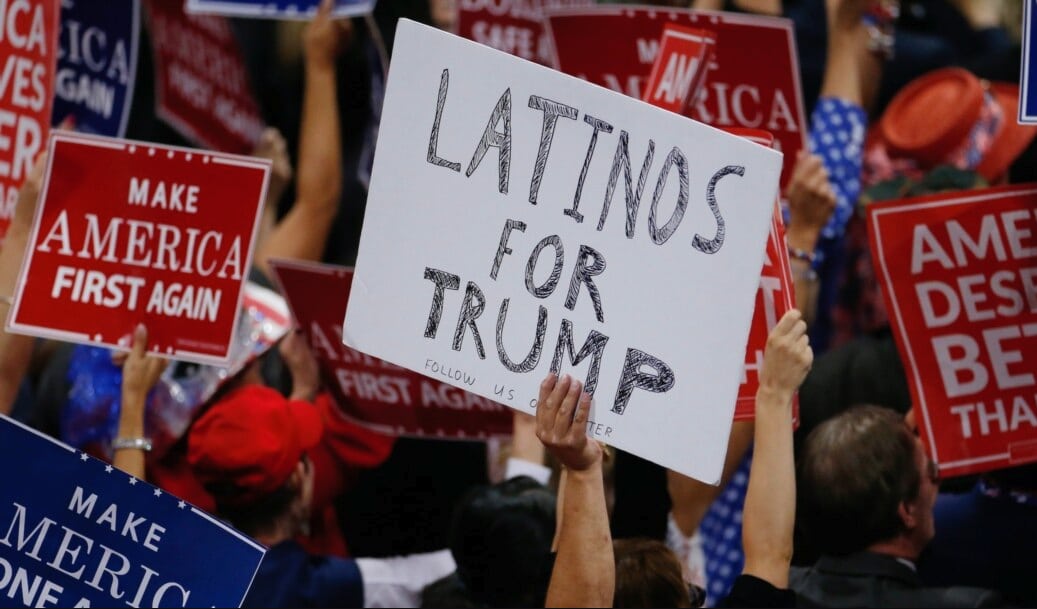
According to Clarissa Martínez-de-Castro, vice president of UnidosUS’s Latino Vote Initiative, Latino voters will play a “decisive role” in the 2024 presidential election.
Martínez-de-Castro suggested that their impact is likely to be enhanced because they are “geographically concentrated” in both battleground states and states with a lot of Electoral College votes, with roughly 25% participating in their first presidential election.
According to recent polls, the race between Joe Biden and Donald Trump, the Democratic and Republican presumed presidential nominees, is tight. A Marist National Poll of 1,192 registered voters conducted in mid-April gave Biden a three-point lead in a head-to-head matchup, with 51% of the vote against Trump’s 48%. However, a Public Opinion Strategies poll for NBC News done during the same time period found Trump at 46% to Biden’s 44%.
Martínez-de-Castro told Newsweek that Latinos will play a significant role in the 2024 election. They play a vital role in the winning formula for the White House, Congressional balance of power, and several state and municipal elections.
“Latinos are geographically concentrated in states with a high number of primary delegates and Electoral College votes (California, Florida, New York, and Texas), electoral battlegrounds (Arizona and Nevada), or both. Furthermore, given razor-thin margins of victory, even in battleground states with lower Latino populations—such as Georgia, Pennsylvania, and Wisconsin—these voters have the potential to change the outcome.”
According to figures gathered by UnidosUS, 31.2 million Hispanic Americans of voting age participated in the 2022 midterm elections, with 18 million registered to vote and 11.8 million casting ballots.
Latino voter registration for 2024 Election
Martínez-de-Castro noted that expanding Latino voter registration might significantly impact the 2024 election race. He stated that it is common for Latinos to report that no one had approached them about voting or urged them to register.
She said, “Building on the fact that more than 80% of Latino registered voters vote in presidential elections (88 percent in 2020), a critical opportunity is addressing the registration gap, which is 13 million and growing.”
“Yet, underinvestment and ineffective outreach to these people continue, exacerbated by incorrect perceptions about this constituency. Much of the work to reduce the registration gap has been left to nonpartisan, nonprofit organizations, who have received little money, especially when contrasted to the expenditures seen during each election cycle.”
UnidosUS commissioned BSP Research to conduct a poll of 3,037 eligible Latino voters in the United States from November 2 to 13, 2023.
According to the survey, 47 percent approved of Biden’s performance as president, while 44 percent disagreed and nine percent said “don’t know.”
In all, 48 percent said they felt the Democrats “cared a great deal” about the Latino population, while 41 percent said they “don’t care much” and 11 percent called them “hostile.”
In comparison, only 25% thought Republicans “care a great deal” about Latinos, while 48% said they “don’t care much” and 26% saw them as “hostile.”
Hispanic Voters Shifting Away from Democrats
According to current research, Hispanic voters, defined as individuals having origins in a Spanish-speaking country and the majority of whom are Latino, are shifting away from the Democratic Party.
For example, a recent American Principles Project/On Message study of Hispanic voters in Arizona and Nevada found Trump and Biden tied with 43 percent and 44 percent, respectively.
Martínez-de-Castro acknowledged “erosion” in Latino support for the Democrats, but disputed media accounts that exaggerated the trend.
She stated, “Generally, at the presidential level, Latino voter support has averaged about two-thirds for Democrats and one-third for Republicans.” The combined average of all available election-eve and exit poll data from 1988 to 2020 is 29 percent Republican support and 67 percent Democratic support.
“The top point for Republicans was George W. Bush in 2000 (40 percent), whereas for Democrats, depending on the polling source, Bill Clinton, Barack Obama, or Hillary Clinton all received more than 70 percent. Democrats gained much of the Latino support that Republicans lost over the last decade. But Democrats did not solidify that support in their column, so Republicans are regaining some of those votes.”
Martínez-de-Castro stated that a November 2023 UnidosUS poll revealed that Latino voters prioritize a well-managed immigration system with border security.
“Where immigration is concerned, the top priorities for action for Latino voters are relief for the long-residing undocumented population and for Dreamers/DACA (Deferred Action for Childhood Arrivals) recipients,” she said in a statement.
On the central subject of abortion, the UnidosUS poll revealed that 71% of Latino voters either strongly or somewhat agreed with the statement that “no matter what my personal beliefs about abortion are, I think it is wrong to make abortion illegal and take that choice away from everyone else.”
Source: Newsweek
-
Celebrity5 months ago
Shane MacGowan, Lead Singer Of The Pogues And A Laureate Of Booze And Beauty, Dies At Age 65
-
Entertainment5 months ago
Robert Downey Jr. Won’t Be Returning To The Marvel Cinematic Universe As Tony Stark
-
Politics5 months ago
Former US Secretary Of State Henry Kissinger Dies Aged 100
-
Politics5 months ago
Unveiling the Power and Influence of The Conservative Treehouse
-
Sports4 months ago
Saints’ Aggressive Play-Calling Ends Up Coming Back To Hurt Them In Loss To Rams
-
Business5 months ago
Tesla’s Cybertruck Hits The Market With A Higher Price Tag And Plenty Of Challenges

